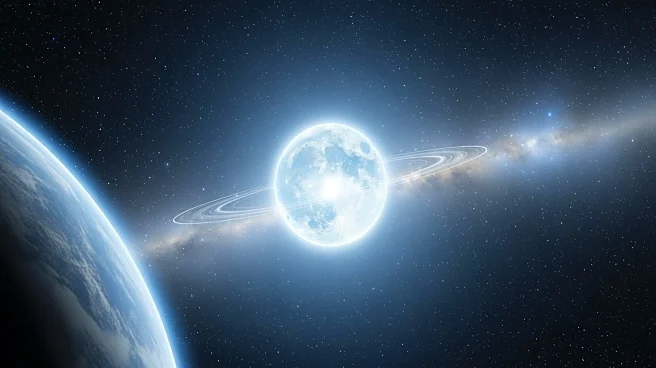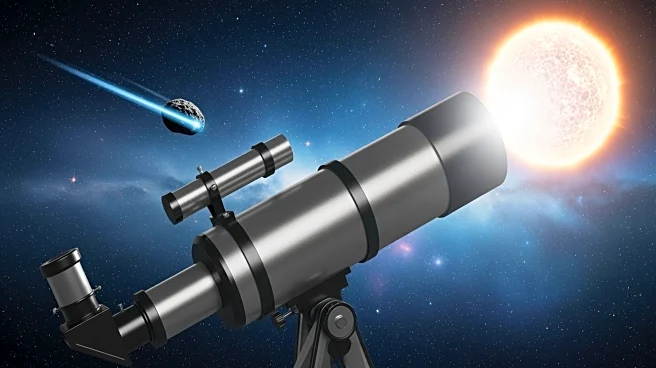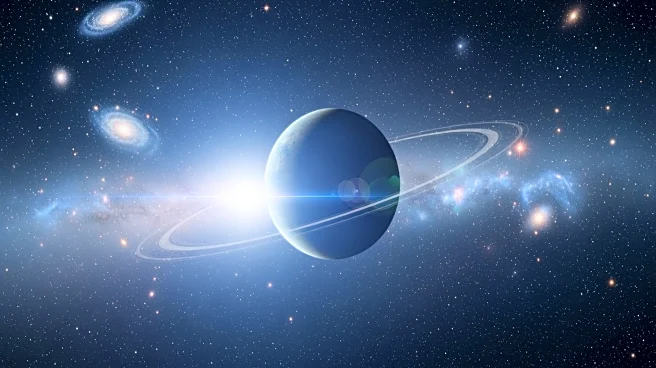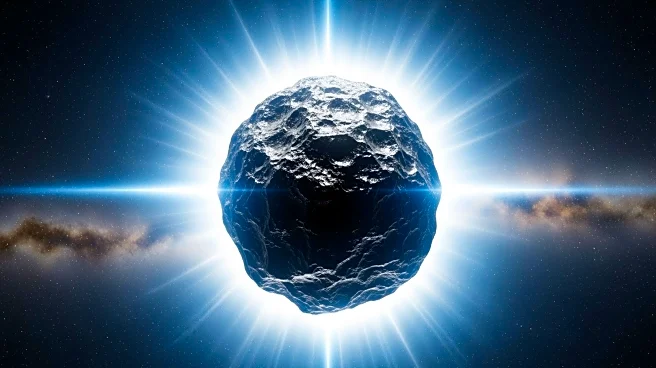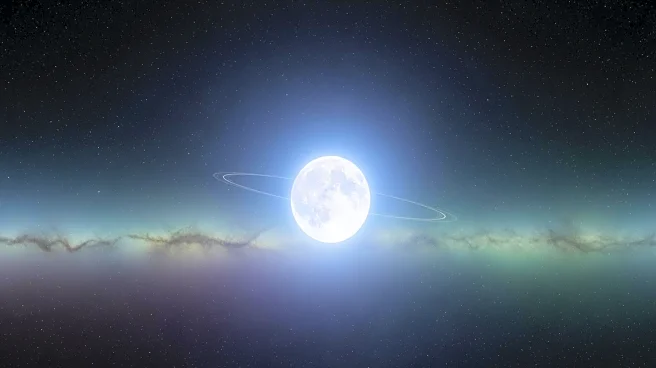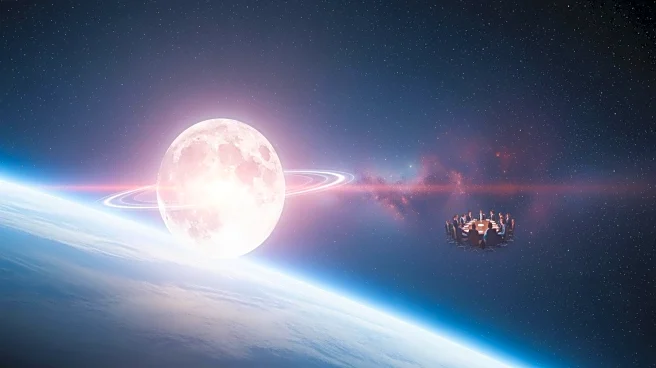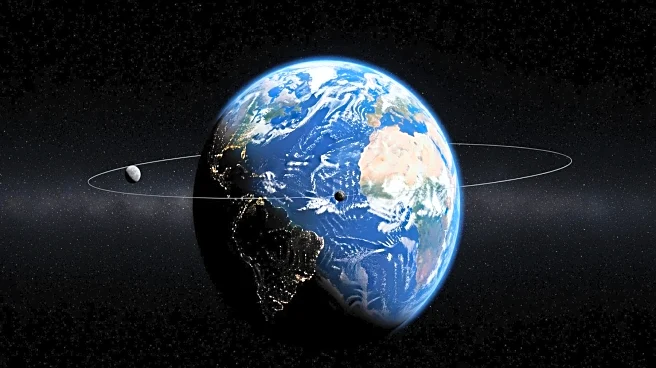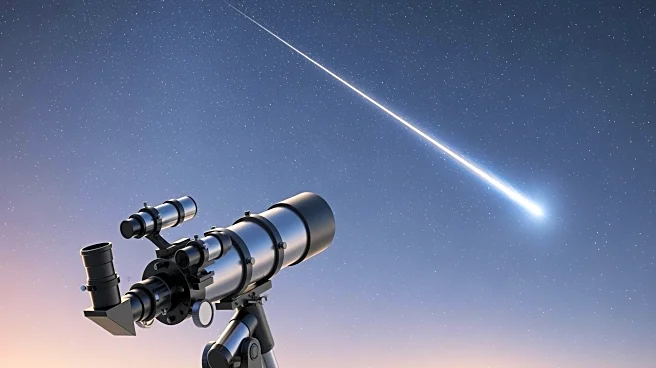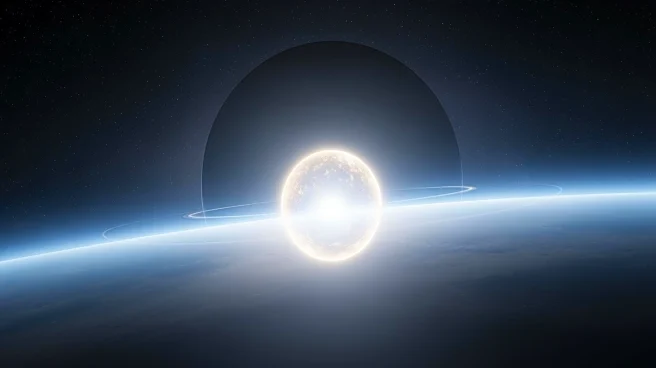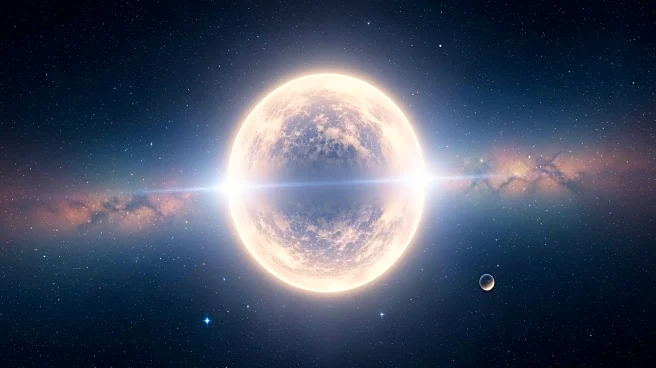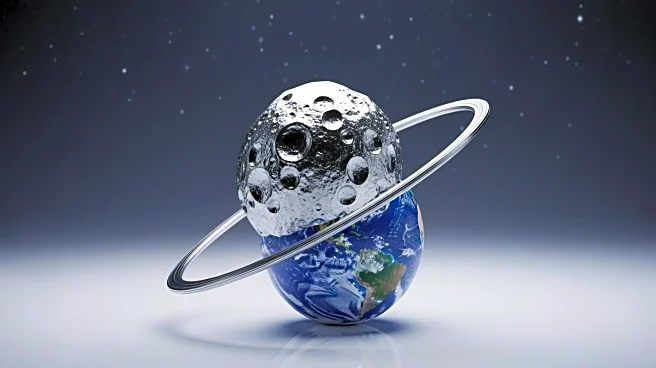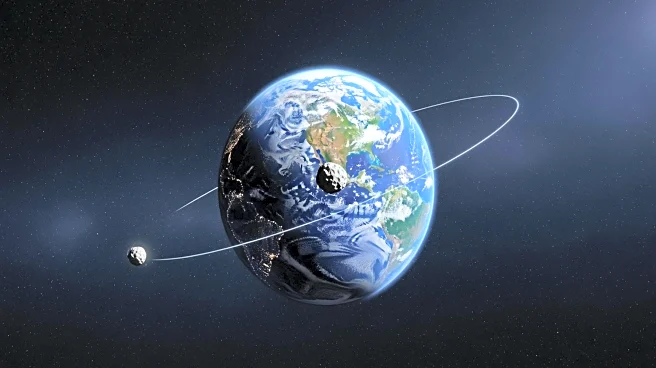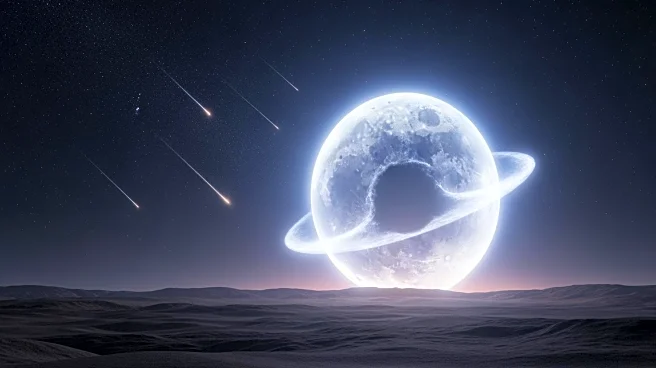What's Happening?
Astronomers have identified a new quasi-lunar moon, designated 2025 PN7, which orbits the sun in a 1:1 resonance with Earth. Detected in August using the Hawaiian Pan-STARRS 1 telescope, this small Apollo-type asteroid is not gravitationally bound to
Earth like the moon but follows a similar solar orbit. Its trajectory analysis reveals that it has been in a quasi-satellite phase since 1965 and is expected to remain so until 2083. The asteroid's minimum distance from Earth is 299,000 kilometers, extending to 17 million kilometers at its farthest point. This discovery adds to the list of seven confirmed quasi-lunar moons, highlighting the dynamic nature of near-Earth objects.
Why It's Important?
The discovery of 2025 PN7 provides valuable insights into the population of near-Earth objects, particularly those in the Arjuna group of asteroids. These objects share similar orbital paths with Earth, making them significant for understanding the dynamics of celestial bodies in our vicinity. The study of quasi-lunar moons can enhance our knowledge of asteroid behavior and potential impacts on Earth. Additionally, these findings could inform future space missions and strategies for asteroid deflection or resource utilization. The presence of such objects underscores the importance of continued observation and research in planetary defense and space exploration.
What's Next?
As astronomers continue to study 2025 PN7, further observations may refine its orbital characteristics and improve predictions about its future trajectory. The ongoing research into the Arjuna group could lead to the discovery of more quasi-lunar moons, expanding our understanding of these transient companions. This research may also influence the development of new technologies for tracking and analyzing near-Earth objects, contributing to global efforts in space safety and exploration. Collaboration among international space agencies and research institutions will be crucial in advancing these scientific endeavors.
Beyond the Headlines
The discovery of quasi-lunar moons like 2025 PN7 raises intriguing questions about the nature of celestial mechanics and the potential for similar phenomena around other planets. It also highlights the need for robust space observation infrastructure to monitor and study these objects. The ethical and legal implications of asteroid mining and resource utilization may become more prominent as our understanding of these bodies grows. Furthermore, public interest in space exploration could be invigorated by such discoveries, fostering greater support for scientific research and education in astronomy.
